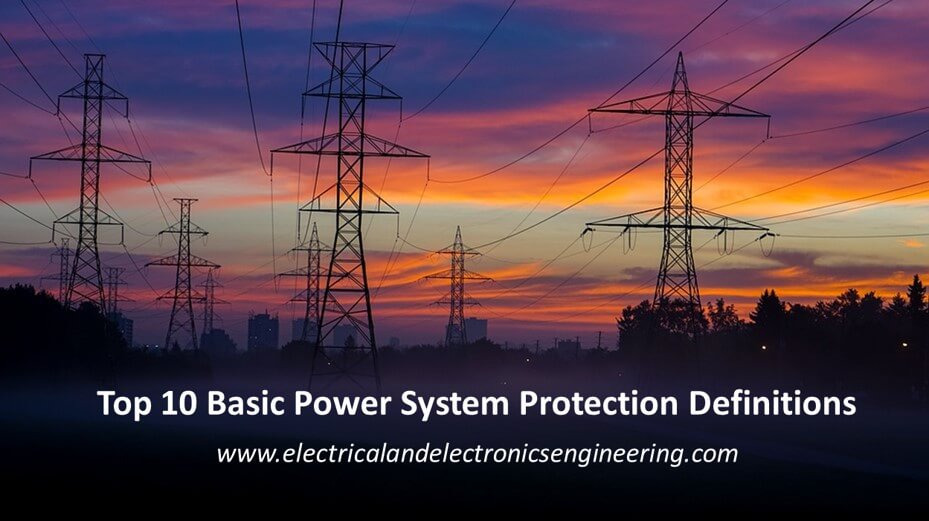Electrical Power System Protection refers to the use of protection elements such as relays, breakers, and fuses for providing protection to buses, generators, transformers, and other power equipment. A protection engineer develops different methods and schemes to protect the power system against faults. Given below are the top 10 and most important definitions every one doing Power EE should know:
- What is Fault: The undesired condition on power which leads to the unwanted working of the power system. A fault when left unnoticed results in failure of power system
- What is Zone of protection: The range within which a protection device can detect a fault is known as fault
- Why is Zone overlapping: The practice of overlapping the zones of multiple devices in such a way that the same portion of the system is detected by multiple devices
- Sensitivity: The ability of protection system to sense faults. The more sensitive a system is, the smaller the fault current it can detect
- Selectivity: The ability of protection devices to correctly determine the faulty element
- Reliability: The trustworthiness of the power system.
- Ground fault: A fault which occurs between one of phase conductor and ground conductor.
- Phase Fault: A fault which occurs between two or more phases.
- Transient: A burst of voltage which lasts for a short interval of time.
- Backup protection: The secondary protection system that operates in case of failure of the primary system.
